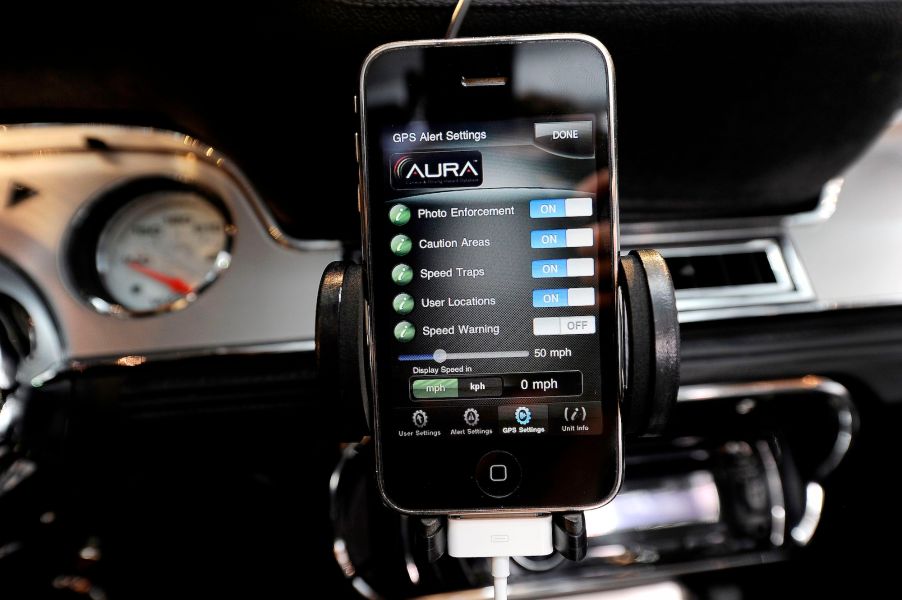
What You Should Know Before Buying a Radar Detector
It doesn’t matter your drive’s distance — you want to get to your destination as fast as possible. But you also want to avoid getting a speeding ticket. The good news is that some car accessories can help you avoid traffic stops. Rather than relying on your own eyes to spot cop cars, you can use a radar detector to scan for police radar while you focus on what’s happening on the road.
If you think a radar detector will make your life easier, you should know a few things before you rush to buy in one.
What are radar detectors?
Getting a speeding ticket is a surefire way to ruin your day, possibly even your week. Not only do you have to go through the hassle and embarrassment of getting pulled over, but you also might be late to your destination (probably something important like work or an appointment). Plus, speeding tickets are expensive.
The radar technology developed during World War II found its way into police cars around 1950. Since then, law enforcement officers have used various devices to identify speeding motorists. And drivers have been looking for radar detectors that will help them locate cops so they can slow down before the officer points the radar gun in their direction.
Radar, an acronym for “radio detection and ranging,” measures the distance to an object and the speed at which it’s traveling, Avoid Radar explains. “To measure speed and distance, a radio transmitter and receiver are used. The transmitter sends out radio waves called radar signals in the desired direction.
“Once the object is hit, the signals reflect … or scatter in numerous directions. The signals which reflect are essential. They reflect the signal … onto the receiver and provide the desired information about distance and speed.”
How radar detectors work
Spotting a police officer is sometimes impossible. Many drivers have no idea they’ve sped past one until they see the flashing lights in their rearview mirror. By this point, the officer has already gotten a reading on your vehicle and likely knows exactly how fast you were driving.
Though patrol officers and speed traps can be difficult to see, you can detect their radar and lasers with the right equipment. This gives you a few seconds of warning to slow down enough to avoid a speeding ticket. The process that radar detectors use is surprisingly simple. How Stuff Works describes it as a manner similar to your vehicle’s antenna picking up your favorite FM radio station.
Many of today’s radar detectors are simple. Identifying radar is the only thing they do. They’re tuned to pick up police radar frequencies. When they detect signals, the device emits warning sounds, and you slow down. The only time they aren’t useful is when an officer is driving behind you and checks your speed.
Radar detectors that both detect and jam radar signals are slightly more complex. They do exactly what the name implies. They not only detect the police officer’s radar gun, but they also jam the frequency, making it impossible for the officer to get an accurate reading of your speed.
Tips for choosing a good model
The last thing you want is to invest in a radar detector and still get a speeding ticket. That’s why you should purchase a reliable model.
Avoid cheap radar detectors. The problem with many inexpensive models isn’t that they can’t pick up police radar. The issue is that nearly everything sets them off. Drivers often shut off their inexpensive models because they go off every time they pass a car using adaptive cruise control, cell phone towers, and myriad other things that emit radar signals, Digital Trends reports.
Instead, look at higher-end models that provide features like GPS functionality and directional indicators, along with technology that prevents them from emitting false alerts.
Digital Trends and Forbes recommend the Escort Max 360, Uniden R7, and Escort Max 9500 iX.
Terms to know when shopping for a radar detector
Shopping for a radar detector will be considerably easier if you take a few minutes to familiarize yourself with some of the terms you’ll encounter during the selection process.
“DSP” is an abbreviation for “digital signal processing,” Digital Trends explains. Radar detectors with this technology can recognize the types of radar and lasers police use. That means you’ll get fewer false hits.
K-band refers to the frequency most police radar guns use. You want a device that can detect radar operating in a range of 24.05GHz to 24.25GHz. K-band is a frequency between 33.4GHz and 36.0GHz, another range that’s popular with police.
X-band radar detectors sound great — they can detect everything, including police radar and traffic sensors. But they also alert you to automatic doors, some radio signals, and a few other things. So you have to be prepared for lots of false alerts.
While shopping for a radar detector, keep in mind that many law enforcement agencies are replacing their traditional radar guns and with laser versions. They prefer laser devices because they’re faster and provide more accurate readings. Choosing a radar detector that comes with laser defuser technology is a great way to avoid speeding tickets no matter the type of detection device the police use.


